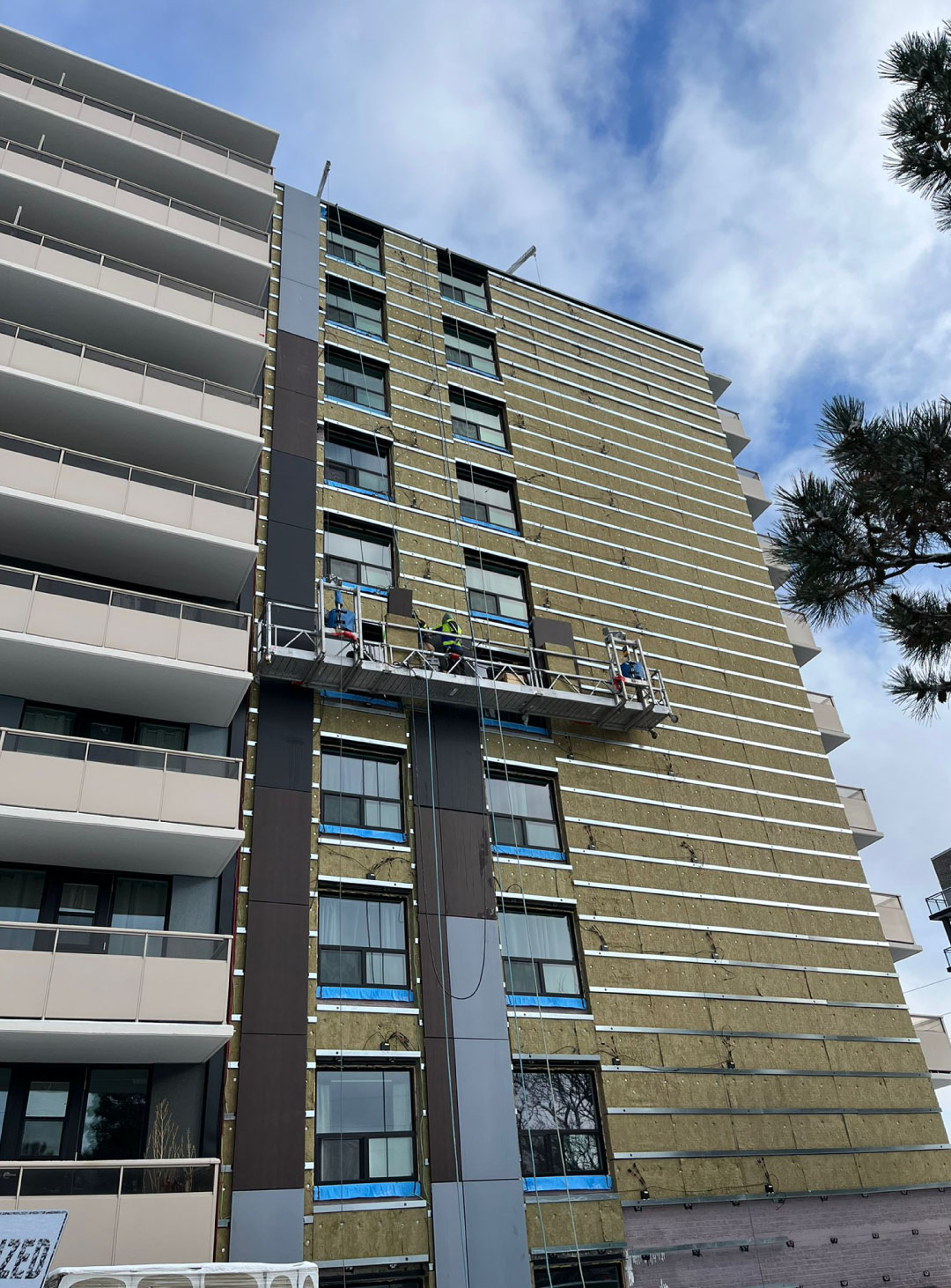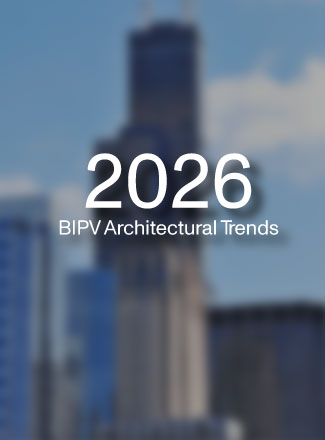
BIPV
June 2, 2023

As the world embraces renewable energy solutions, building integrated photovoltaics (BIPV) has emerged as a game-changer by seamlessly integrating solar panels into building structures. Unlike traditional solar installations, BIPV systems serve a dual purpose: generating clean and sustainable electricity while simultaneously enhancing the aesthetic appeal of the building. Let's delve into the unique features of building integrated photovoltaics installation systems, focusing on prefab wall and rainscreen options.
The prefab wall system comprises an innovative external envelope panel that embodies sustainability, lightweight design, and exceptional performance. These panels offer a wide range of architectural finish options, making them versatile for various surfaces and design preferences. At the core of these prefab wall panels lies a honeycomb structure, providing a solid foundation and structural stability. This structural integrity enables the panels to span extensive areas and seamlessly integrate window systems without additional structural reinforcements. Remarkably lightweight, these panels can be easily maneuvered and installed floor by floor from within the building structure, which simplifies the construction process and reduces the need for extensive on-site work. Moreover, the panels come equipped with integrated thermal, air, water, and vapor barriers, ensuring optimal building performance and energy efficiency. An integral feature of these panels is their integrated drainage system, which qualifies them for rainscreen classification. This innovative system enhances the overall performance of the panels and supplements the entire system's performance. When it comes to connecting the panels to the building, this design approach minimizes potential issues and streamlines the installation process by bypassing construction tolerances. Reducing the number of connection points helps mitigate thermal bridging, ultimately improving the system's overall thermal efficiency.
The extensive range of rainscreen solutions for building integrated photovoltaics involves an innovative air-pressurized cavity wall system explicitly engineered to eradicate water infiltration and facilitate optimal ventilation in construction projects. This system employs a unique double-wall construction technique, employing an outer layer that effectively shields against rainwater while allowing for adequate breathability akin to human skin. This exterior layer acts as a protective barrier, preventing water from penetrating the structure while permitting air circulation. Simultaneously, the inner layer of the system ensures exceptional thermal insulation, significantly minimizing unwanted energy loss. It also acts as a barrier to excessive air leakage, ensuring a well-regulated and energy-efficient interior environment. Furthermore, the inner layer is capable of withstanding wind loading, further enhancing the structural integrity of the building.Within this system, there are two distinct installation options available, each catering to specific project requirements and preferences. The first option is known as "stick-built," where the installation occurs on a panel-by-panel basis and offers meticulous attention to detail and flexibility during the construction process, allowing for precise adjustments and customization.The second installation option is referred to as "pre-panelized." In this method, the panels are prefabricated in advance and subsequently installed as a single, cohesive unit. This approach promotes enhanced efficiency, reduces installation time, and streamlines the construction process.By leveraging this advanced rainscreen system, construction projects benefit from superior protection against water penetration while promoting adequate ventilation.Building integrated photovoltaics (BIPV) has transformed the renewable energy and sustainability landscape by seamlessly integrating solar panels into building envelopes. Prefab wall and rainscreen installation systems offer unique features and advantages, such as sustainability, lightweight design, structural stability, integrated barriers, and efficient installation methods while protecting against water infiltration, promoting optimal ventilation, and improving overall building performance.
News & Articles

This blog breaks down what project teams can expect when planning for Mitrex solar cladding installation. Based on standardized guidelines, we outline how project scope, system type, and sequencing all influence timelines — with a transparent look at estimated crew size, daily install rate, and duration.

This blog breaks down what project teams can expect when planning for Mitrex solar cladding installation. Based on standardized guidelines, we outline how project scope, system type, and sequencing all influence timelines — with a transparent look at estimated crew size, daily install rate, and duration.

Mitrex BIPV is engineered to match—and exceed—the lifespan of high-performance building envelope systems, delivering structural durability, long-term energy output, and measurable sustainability benefits. This article outlines the testing, certifications, and warranties behind solar facades designed to perform for decades across global climates and project types.

Mitrex BIPV is engineered to match—and exceed—the lifespan of high-performance building envelope systems, delivering structural durability, long-term energy output, and measurable sustainability benefits. This article outlines the testing, certifications, and warranties behind solar facades designed to perform for decades across global climates and project types.

Design-driven solar façades are the future—and in 2026, building-integrated photovoltaics (BIPV) must meet high architectural standards as well as performance benchmarks. This blog highlights five architectural design trends that are shaping next-generation BIPV applications and how Mitrex products—from custom murals to landmark towers—are making them a reality.

Design-driven solar façades are the future—and in 2026, building-integrated photovoltaics (BIPV) must meet high architectural standards as well as performance benchmarks. This blog highlights five architectural design trends that are shaping next-generation BIPV applications and how Mitrex products—from custom murals to landmark towers—are making them a reality.